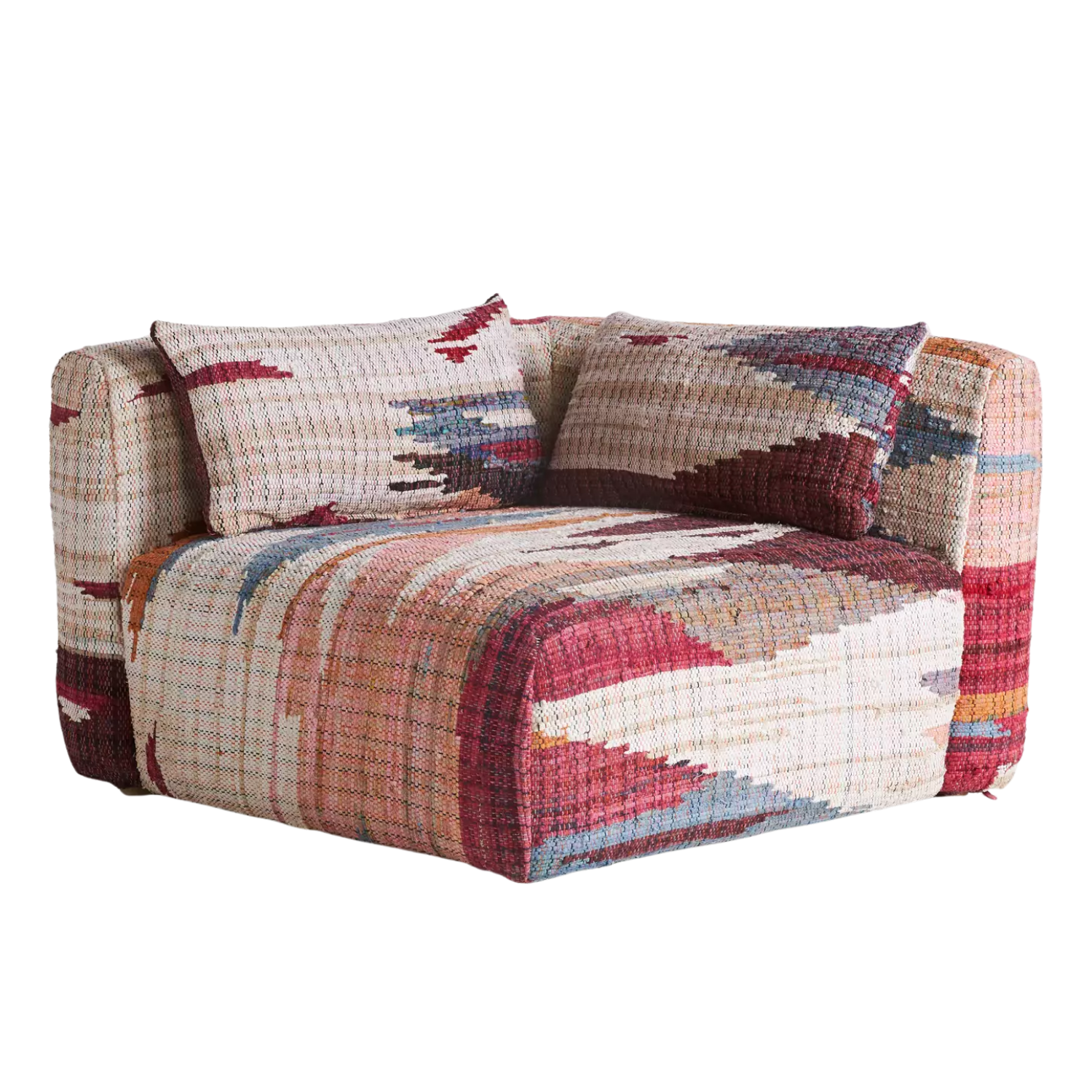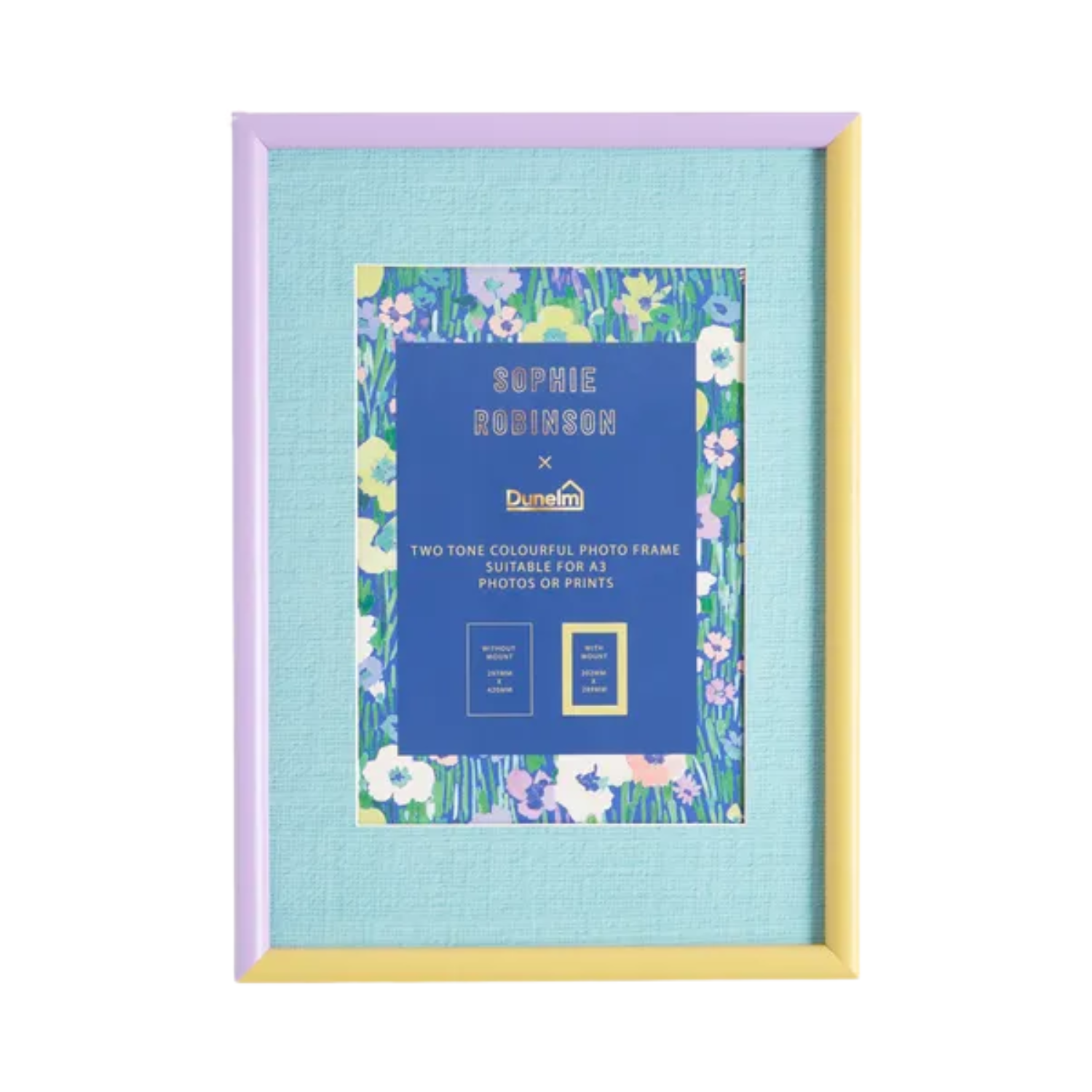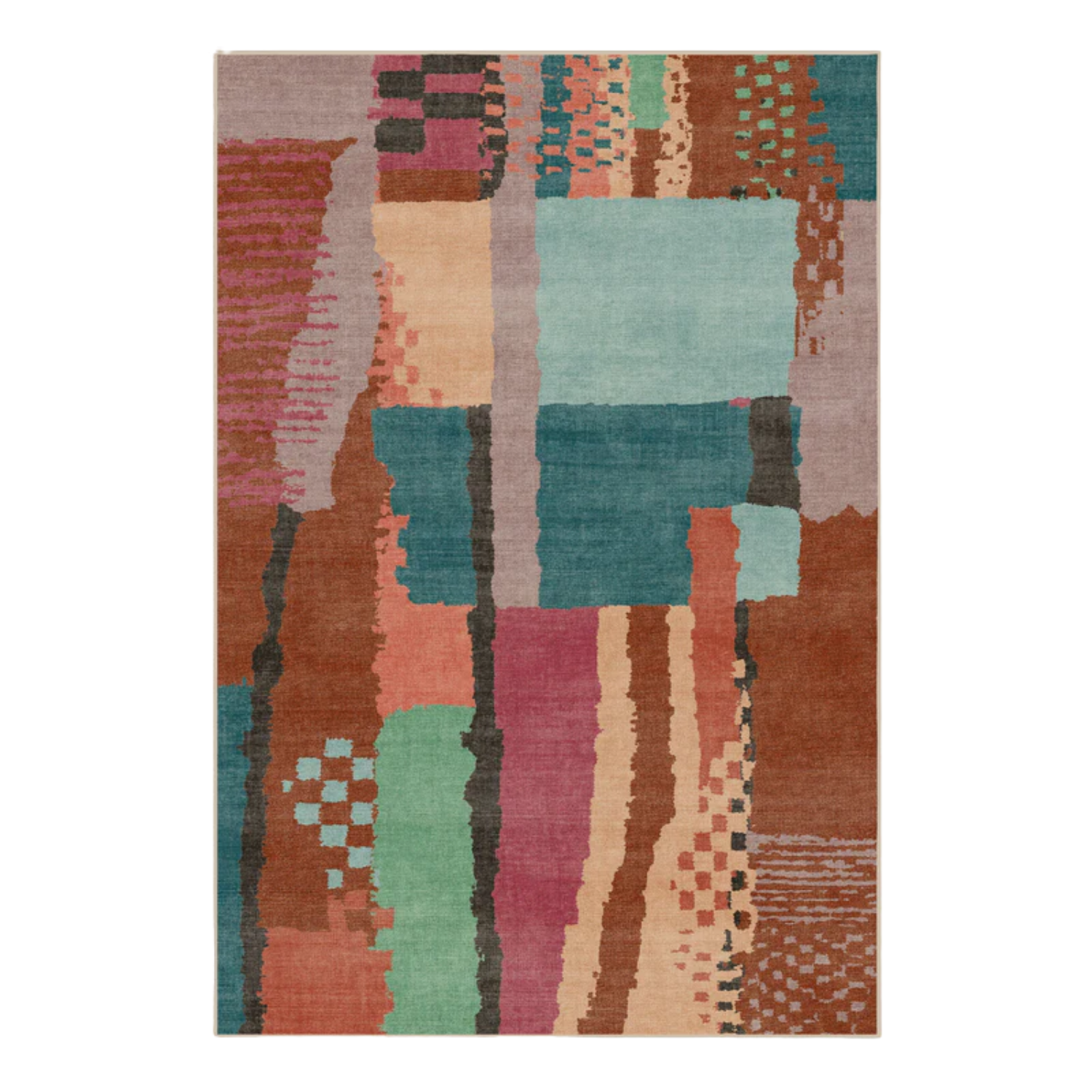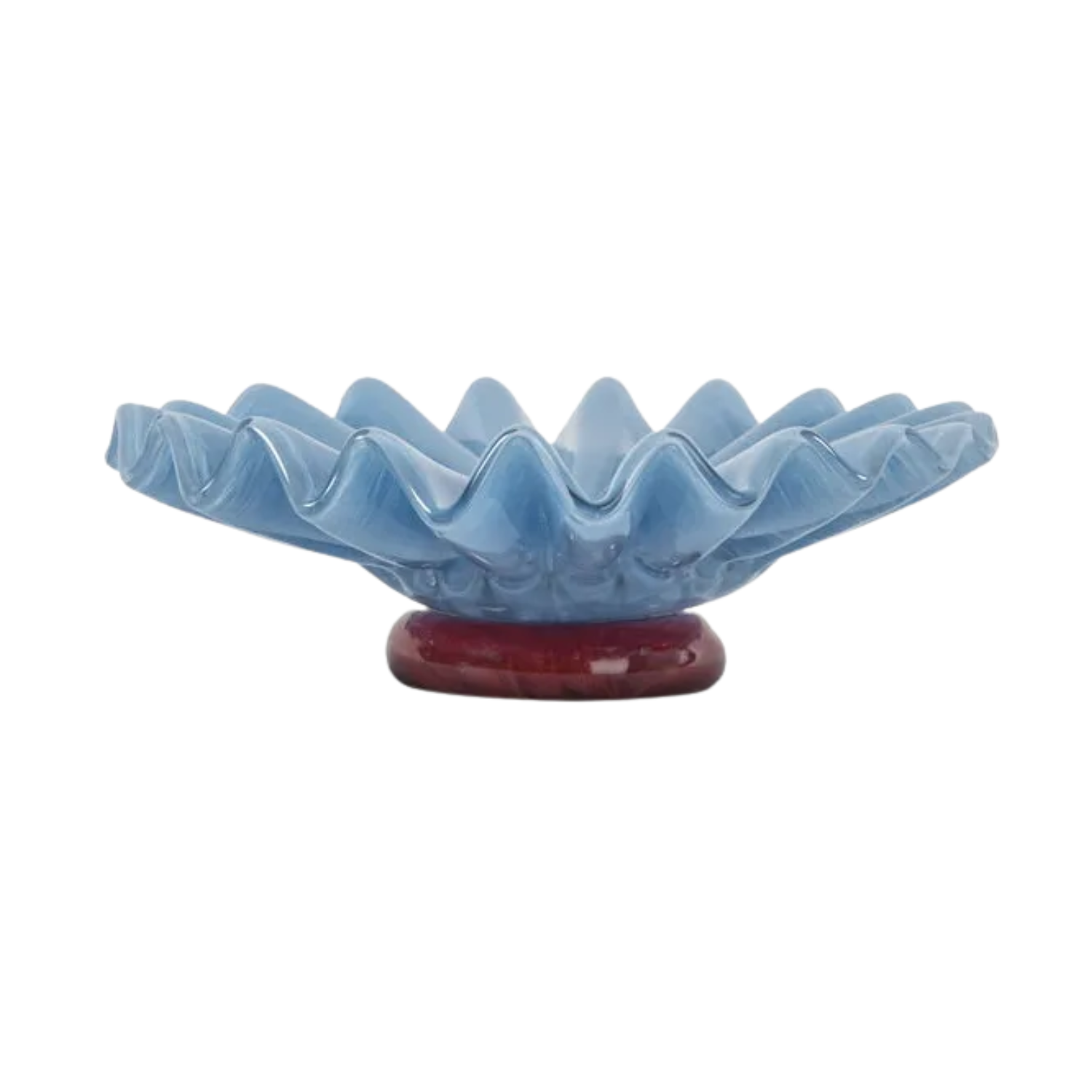Okay, 'Tidy Maximalism' Might Perfectly Sum Up My Interior Style — This Is How to Add Personality Without Falling Into the Trap of Clutter
What if you could have all the boldness of maximalism with the organization of an intentionally curated home?
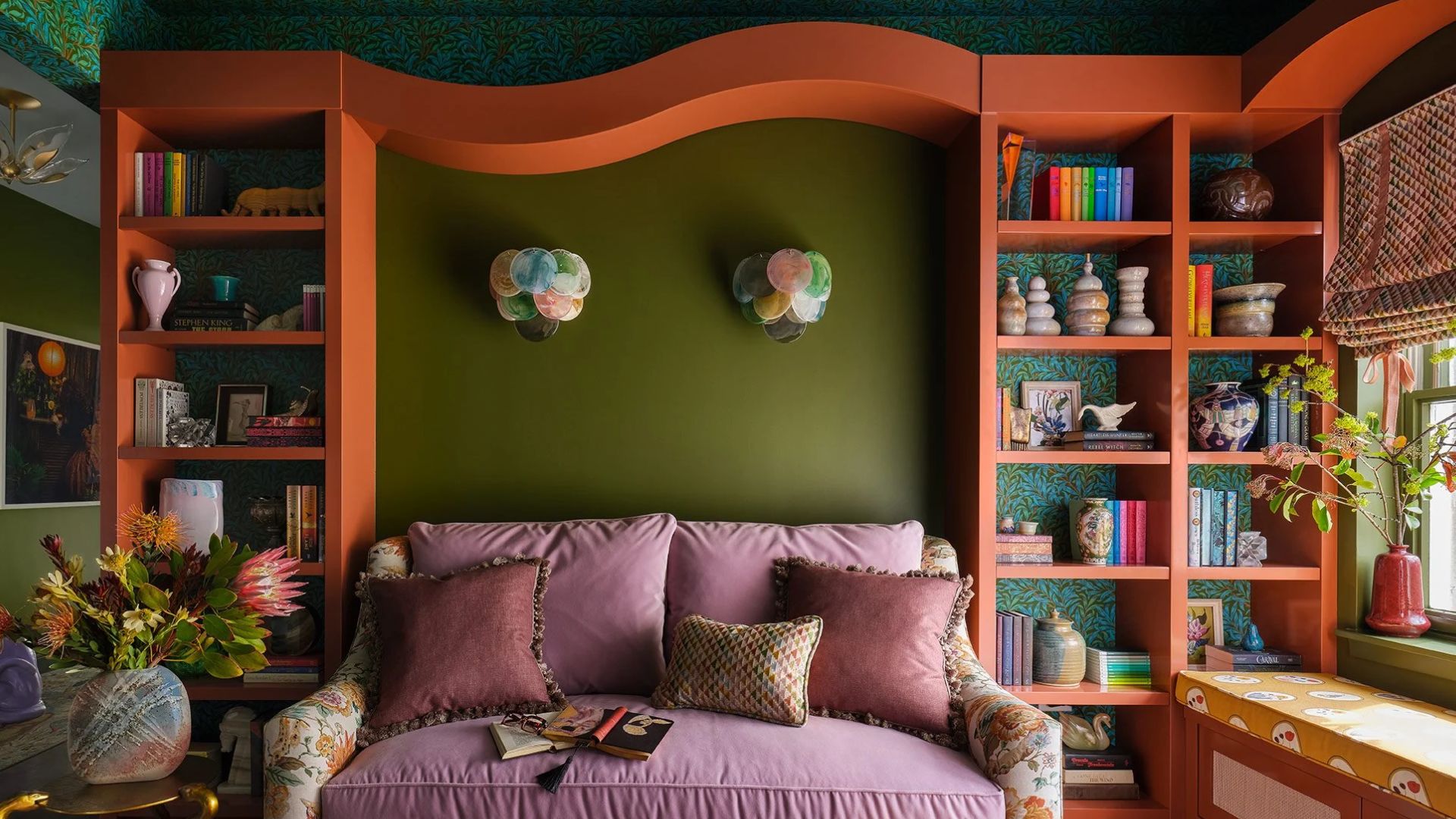

For so long, my Pinterest boards have reflected organized, pared-back minimalist interiors that feel unwaveringly calm. But of late, I have found myself gravitating towards brighter colors, striking patterns, and bold design.
However, as someone who is almost always looking for new ways to declutter and organize, maximalism in interior design has always been an aspirational aesthetic rather than a style that would actually fit and function in my home until I discovered tidy maximalism.
This trend is the perfect happy medium between maximalist spaces that are blanketed in vibrant decor and well-organized rooms that are relaxing. So, if, like me, you've been pulled in two different stylistic directions, not knowing where to land, let me introduce you to tidy maximalism and its world of organized exuberance.
What Is Tidy Maximalism?
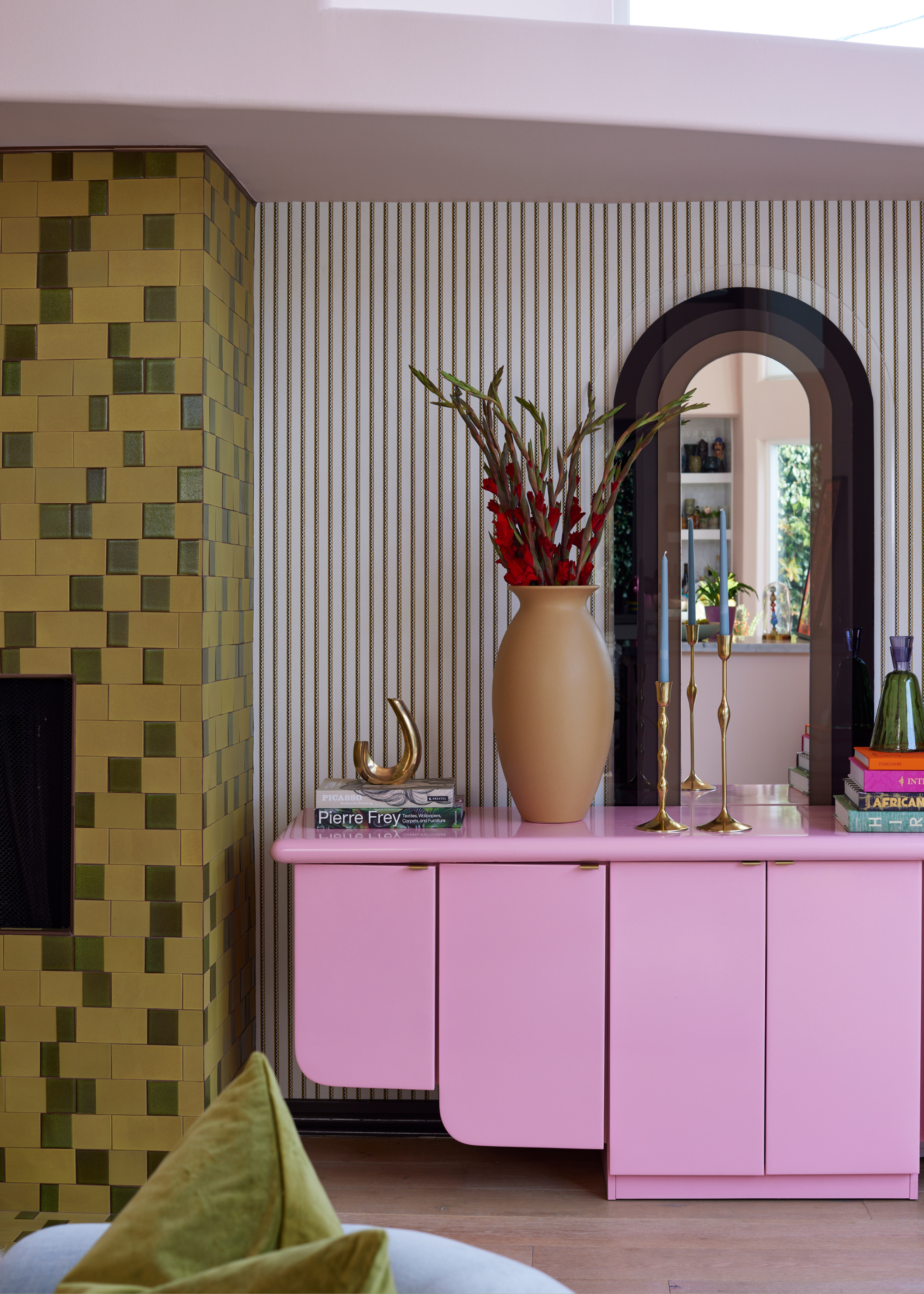
A balance of spirited colors and tidiness in organization.
Interior designer Olga Naiman defines tidy maximalism as layering color, texture, pattern, and personal artifacts with the discipline of organization and intentionality. "It stands in contrast to the emphasis minimalist interior design places on sparsity and restraint, offering instead a framework for abundance that is thoughtfully curated," she notes.
"In essence, it is maximalism refined. A space brimming with meaningful elements, where every object serves a narrative or functional purpose, arranged with precision to foster harmony and flow."
Drawing on psychological principles, Olga explains that this approach acknowledges the profound impact interiors have on cognitive and emotional well-being. "Research in this field suggests that personalized, layered environments can enhance creativity and a sense of identity, provided they are not overwhelming," she adds.
Similarly, Katie Gutierrez, co-founder of Errez Design, tells me that there's an art to tidy maximalism. "It's for those who understand that beauty needs discipline, that too much without order is just noise," she says. "You don't throw everything you love into a room and call it personality. You curate. You edit. You mean it."
The Livingetc newsletters are your inside source for what’s shaping interiors now - and what’s next. Discover trend forecasts, smart style ideas, and curated shopping inspiration that brings design to life. Subscribe today and stay ahead of the curve.
And Cary Moeller, founder of Unpatterned, agrees. "Tidy maximalism can be thought of as curated collections with a more-is-more vibe," she says. "It’s not just having stuff to have stuff. Instead, there’s a common thread that creates balance and intention."
So if you've explored neutral maximalism but you miss the vibrance, and Scandi-maximalism is still more laid-back than you'd like, then here's how to bring this trend home in a way that feels boldly true.
Katie has 20+ years of experience in Interior Design and a Master's Degree in Architecture. She is the Founder of Errez Design and her work has been featured in Architectural Digest, Forbes, Veranda, Livingetc, Luxe Interiors and more.
Carly Pokornowski Moeller is the Founder & Principal Designer at Chicago-based interior design studio, Unpatterned. She is a registered interior designer and licensed architect in Illinois with a Master of Architecture from the University of Illinois at Urbana-Champaign. With more than 20 years of experience in the design, architecture, and construction industries, she has a true understanding of space, construction, materials, and aesthetics. Carly launched Unpatterned after designing and renovating her own home.
Ways to Create the Tidy Maximalist Look
1. Create Strong Focal Points

A stylish focal point will stabilize your space.
Firstly, Olga recommends anchoring each room with one commanding focal point that draws the eye immediately. "This could be an oversized piece of art, a dramatic accent wall, or a bold furniture piece like a patterned sofa," she says.
"The key is ensuring this focal point is substantial enough to ground all the surrounding layers and patterns. When you establish a clear visual hierarchy with a dominant element, everything else in the room can play a supporting role, preventing the space from feeling chaotic."
Creating emphasis in your interior design will help lend stability to your tidy maximalist home while allowing you to express your style in full form.
Founded by stylist and interior designer Olga Naiman, Spatial Alchemy is an integration of interior design with principles of human transformation. Its mission is to unite psyche, body and home for the purpose of self-realization. After getting a Bachelor’s Degree in Clinical Psychology from Tufts University, Naiman decided to explore all strata of alternative healing & transformation. Simultaneously, her design career was flourishing. She was a residential and commercial interior designer as well as an interior stylist for editorial, advertising and catalog. Her apartments were featured in Vogue and Domino Magazine with clients ranging from Elle Decor to Oscar de la Renta.
2. Tame Your Gallery Walls
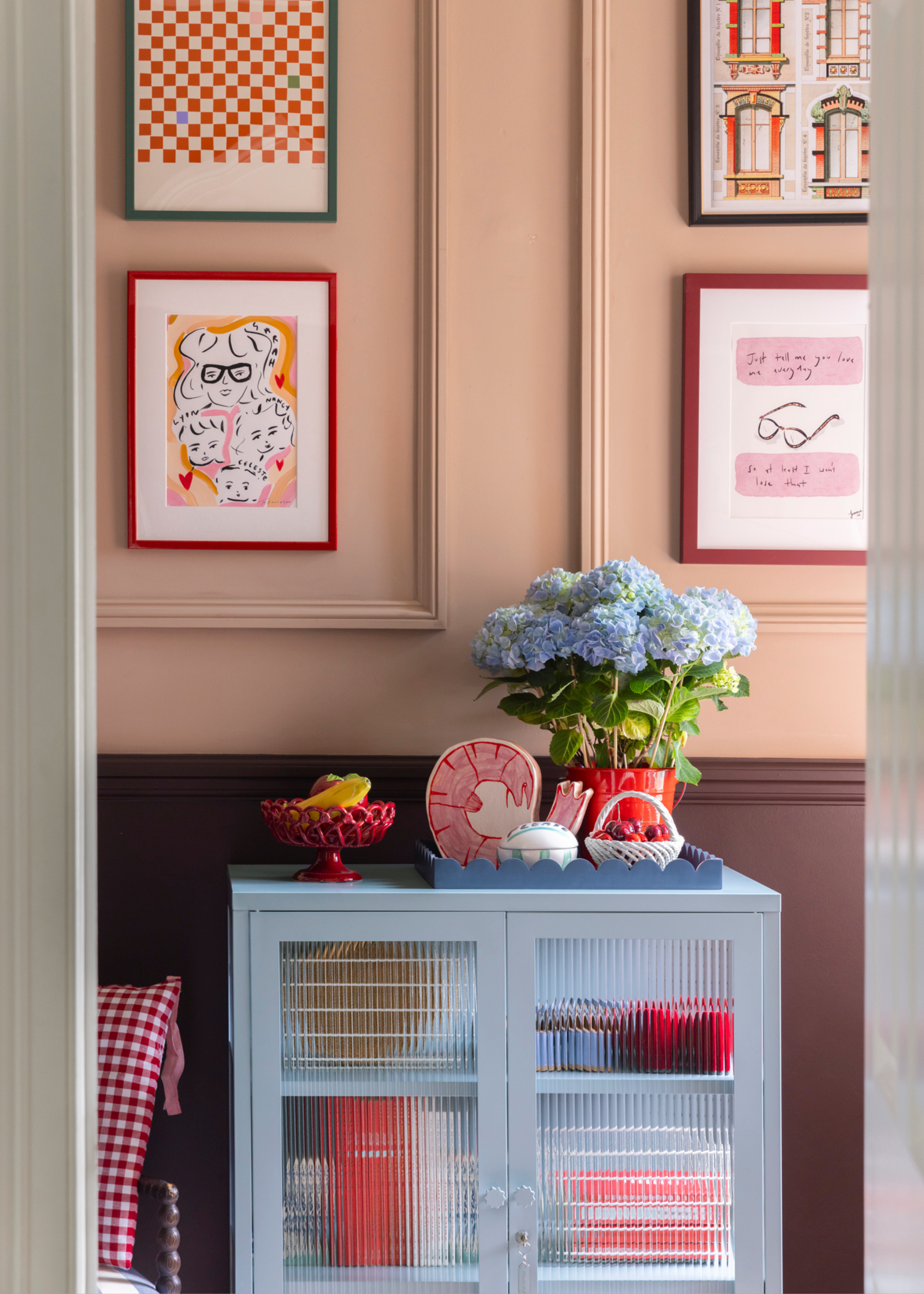
Adorn your walls in frame, but keep your blueprint clean.
While gallery walls are a maximalist staple, Olga points out that they require discipline to avoid looking cluttered." Start by choosing a unifying element. Whether it's matching frames, a consistent color palette, or a common theme across the artwork," she suggests.
"Map out your arrangement on the floor first, maintaining consistent spacing between pieces — typically two to three inches. Vary the sizes but ensure there's a visual balance, with larger pieces anchoring the composition and smaller ones filling in gaps."
Her advice is to consider the wall as a single art installation rather than a collection of individual pieces. And advises against feeling compelled to fill every inch of wall space.
If you prefer to channel tidiness through a minimal gallery wall but with maximalist colors, this colorful picture frame matting DIY should be your next at-home project.
3. Integrate Your Colors
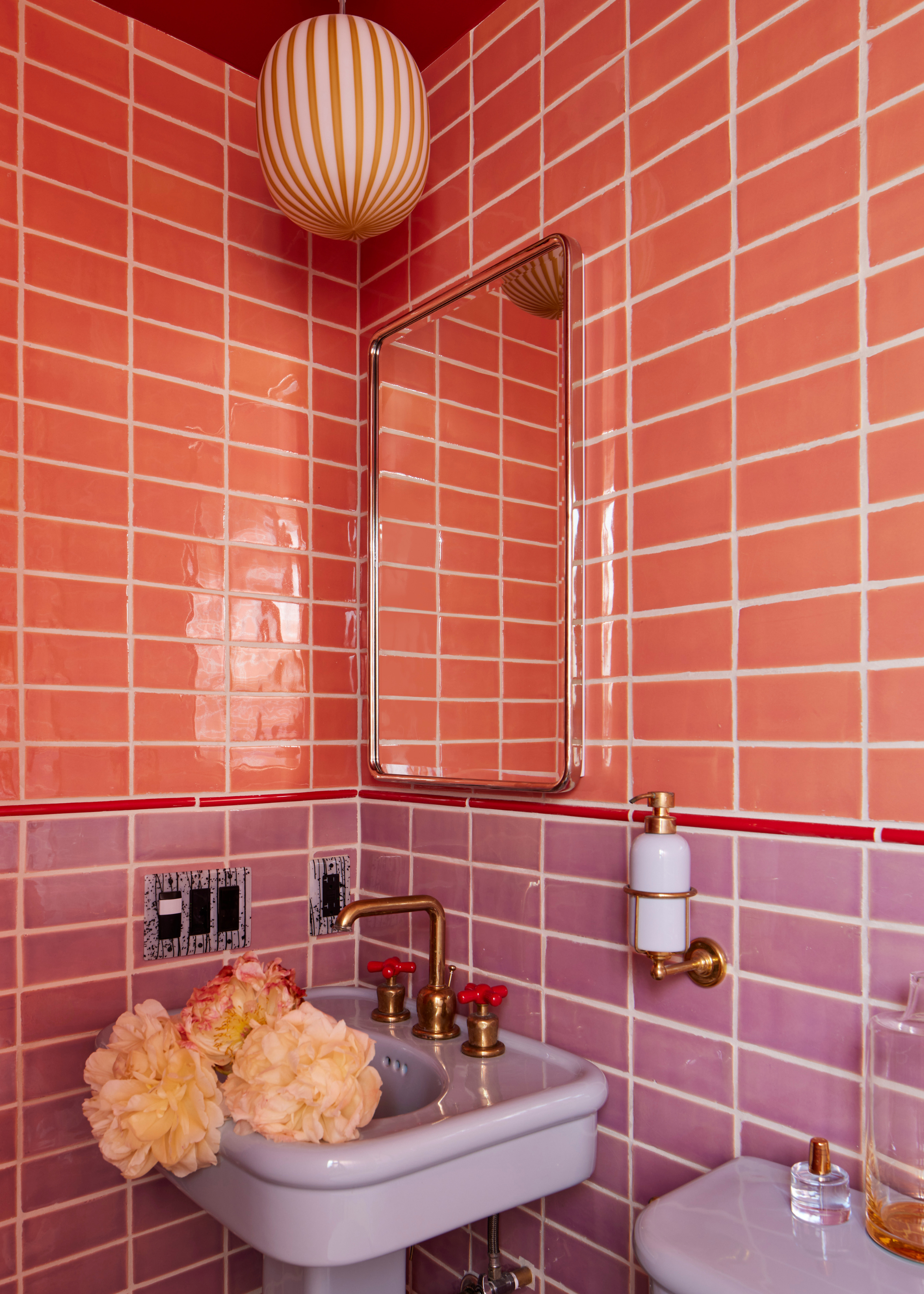
Splash your favorite maximalist colors across your room with intention.
According to Olga, color integration is what separates sophisticated maximalism from overwhelming chaos. "Choose a foundation palette of three to four colors that will appear throughout the room in different intensities and textures," she advises.
"For instance, if your palette includes deep emerald, warm gold, and rich burgundy, ensure these colors appear in your artwork, textiles, furniture, and accessories."
Plus, she recommends using the 60-30-10 rule to design your palette. "This creates visual cohesion even when mixing bold patterns and diverse objects, making the space feel intentional rather than accidental."
4. Bring in Negative Space
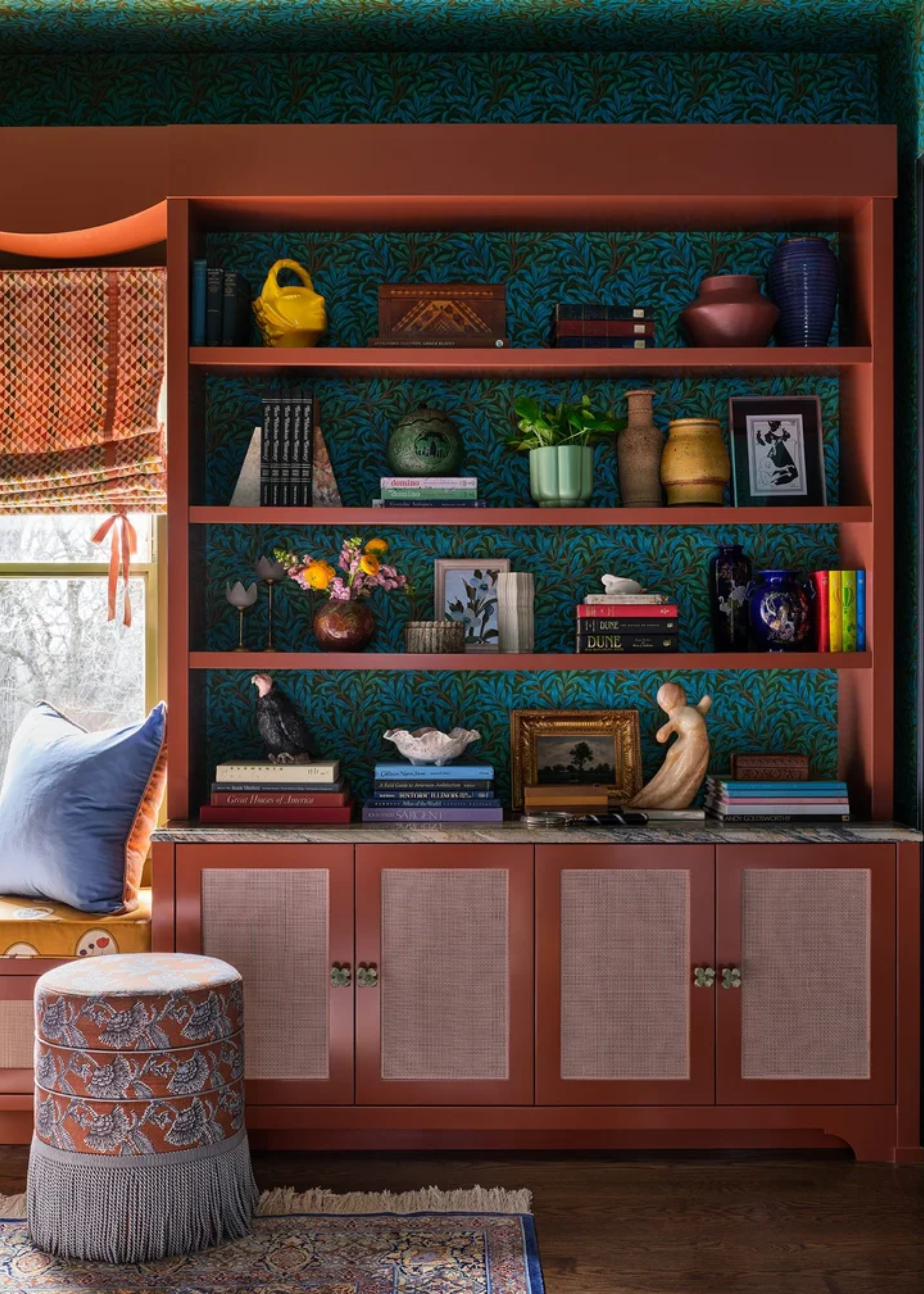
Harness the power of negative space to restore calm.
Where tidy maximalism is concerned, Olga finds that negative space is the secret weapon to a well-designed space. "It's what prevents the maximalist from becoming overwhelming," she says.
"Strategically leave some surfaces clear, allow breathing room around furniture groupings, and resist the urge to fill every corner. This might mean leaving one wall relatively sparse in a room full of pattern, or keeping a side table unadorned while surrounding furniture is heavily styled."
She suggests thinking of negative space as a visual palate cleanser that allows the eye to rest and appreciate the carefully curated elements you've chosen to display. Another key difference between complete maximalism and this organized spin-off.
5. Play with Scale
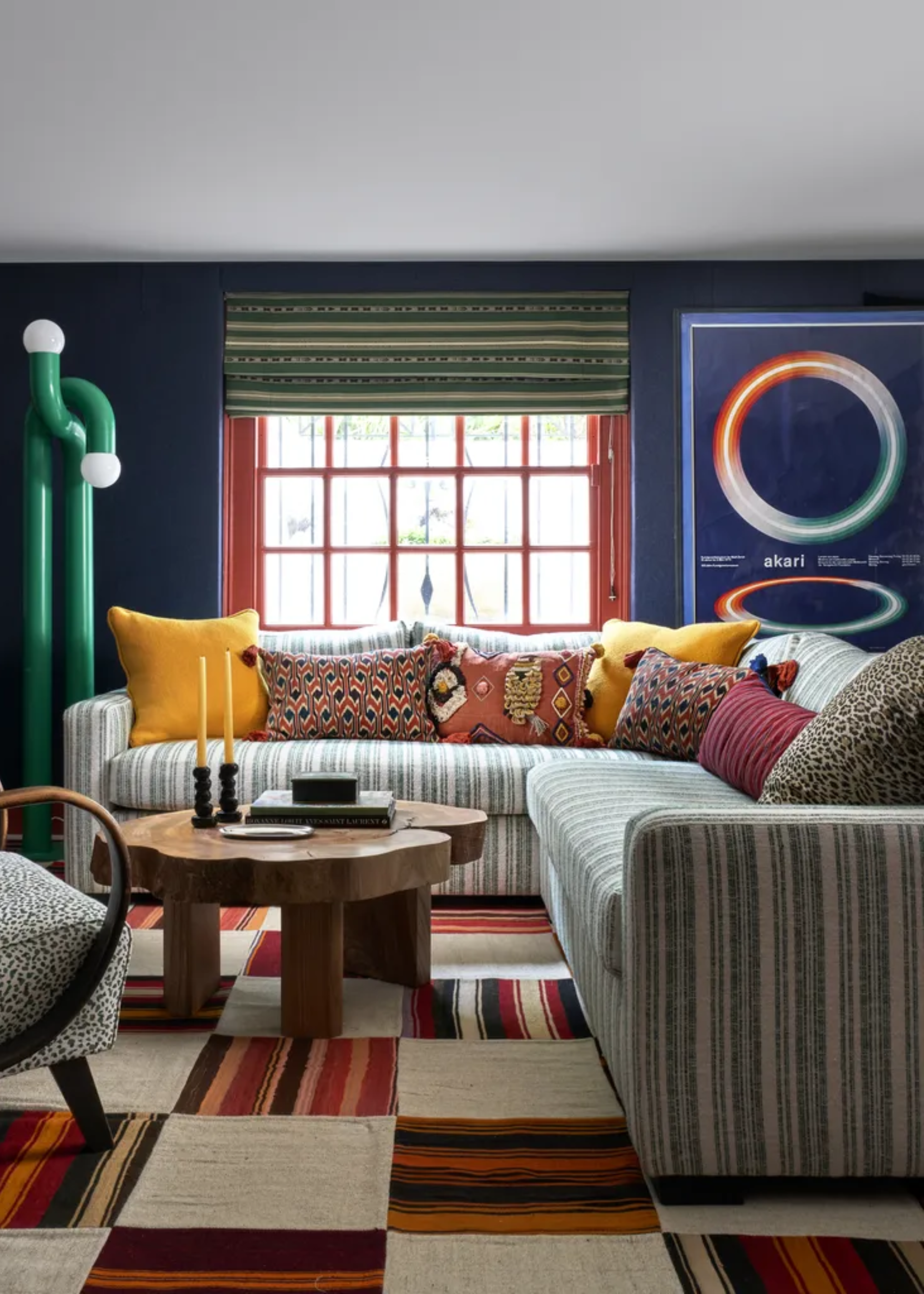
Utilize scale to avoid overwhelm in your home.
If you're designing your own tidy maximalist space, Olga swears by harnessing scale to spark visual interest while keeping a room from feeling flat or monotonous. "Mix oversized elements with smaller, delicate pieces. Think a large-scale botanical print paired with petite ceramic objects, or a massive floor mirror alongside tiny framed photographs," she says.
"And this design principle applies to patterns too. You can combine large-scale floral patterns with fine geometric prints, or even broad stripes with intricate damasks."
She explains that playing with scale in interiors also means ensuring your furniture proportions work together. "A substantial sectional can handle bold, large-scale accessories," she adds. "While delicate antique pieces pair better with refined, smaller decorative objects."
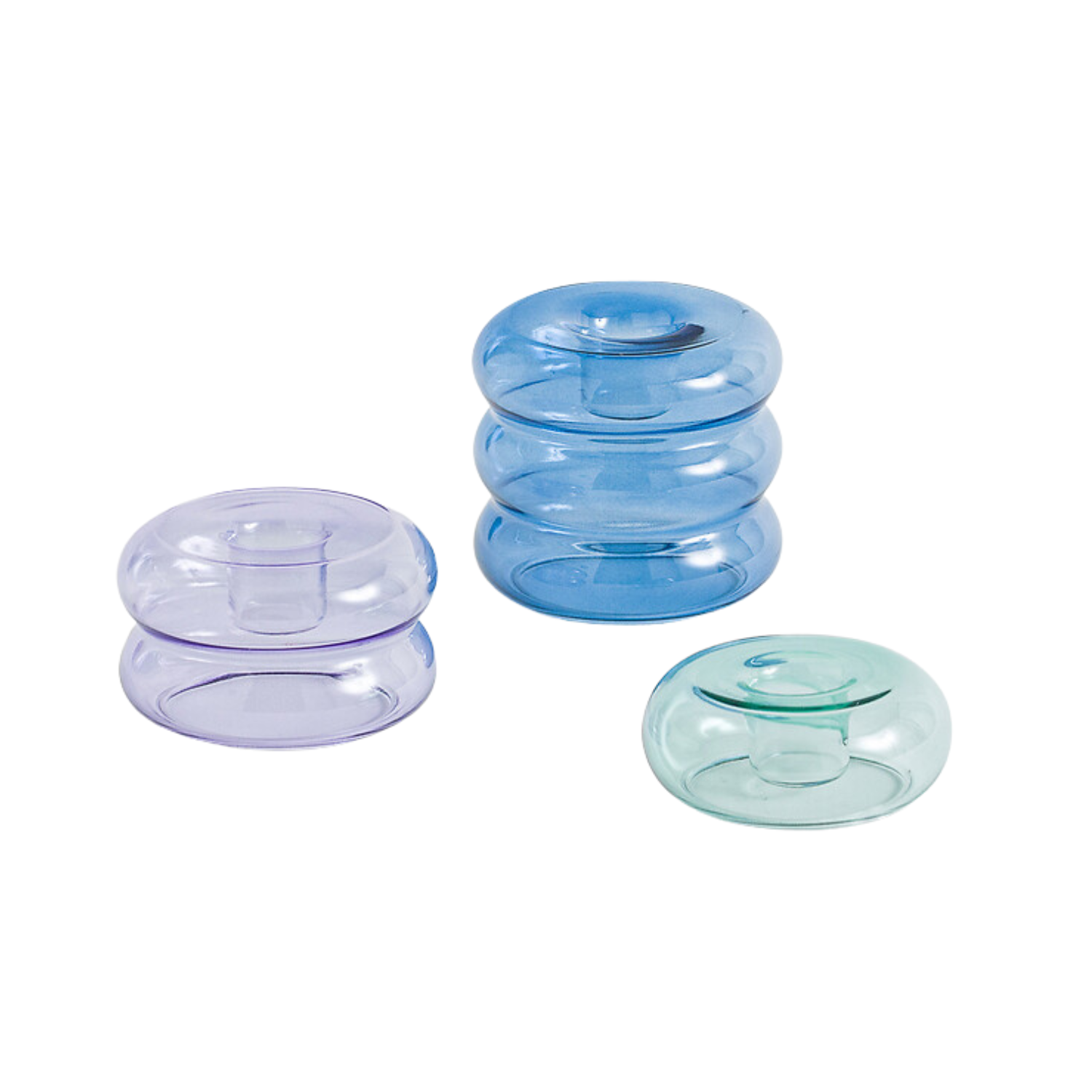
Quantity: Set of 3
Pair these Leramo Coloured Glass Candle Holders with these Two Tone Candles by SO'HOME to play with scale and color in a fun maximalist manner.
FAQs
What Is the Difference Between Clutter and Maximalism?
"Clutter is lazy, maximalism is precise. One is baggage and the other is style," says Katie. "If your space doesn't make you feel alive, like you've just walked into a story only you could write — start over. Strip it back. Then build it better."
Carly also explains that clutter is chaos and not necessarily wanted. "Clutter is often not purposeful. On the other hand maximalism can be organized, intentional, and balanced while being a lot," she says. "Simply put, clutter is messy and maximalism is not."
The best part about interior design trends is that each style trickles off the pages of magazines and into homes, never without a personal finish. So you can take any trend and make it your own. If you ask me, the rules are there to be tweaked to the contentment of your home.

Amiya is a Home Wellness Writer at Livingetc. She recently graduated with a Masters Degree in Magazine Journalism from City, University of London, and has lent her words to beauty, fashion, and health sections of lifestyle publications including Harper’s Bazaar and Women’s Health. Her experience as a research analyst has equipped her with an eye for emerging trends. When she’s off the clock, she can be found reading, listening to music, or overanalyzing her latest Co-Star update.
